Cabins have long been a symbol of escape and connection to nature. Historically, they represented simplicity and rustic charm. However, as architectural trends evolve, so does the concept of the traditional cabin. Today, cabin exterior ideas are pushing the boundaries, blending the age-old rustic charm with modern aesthetics and functionality. This fusion is redefining the essence of a wilderness retreat for the contemporary adventurer.
Eco-Friendly Facades in Modern Cabin Designs

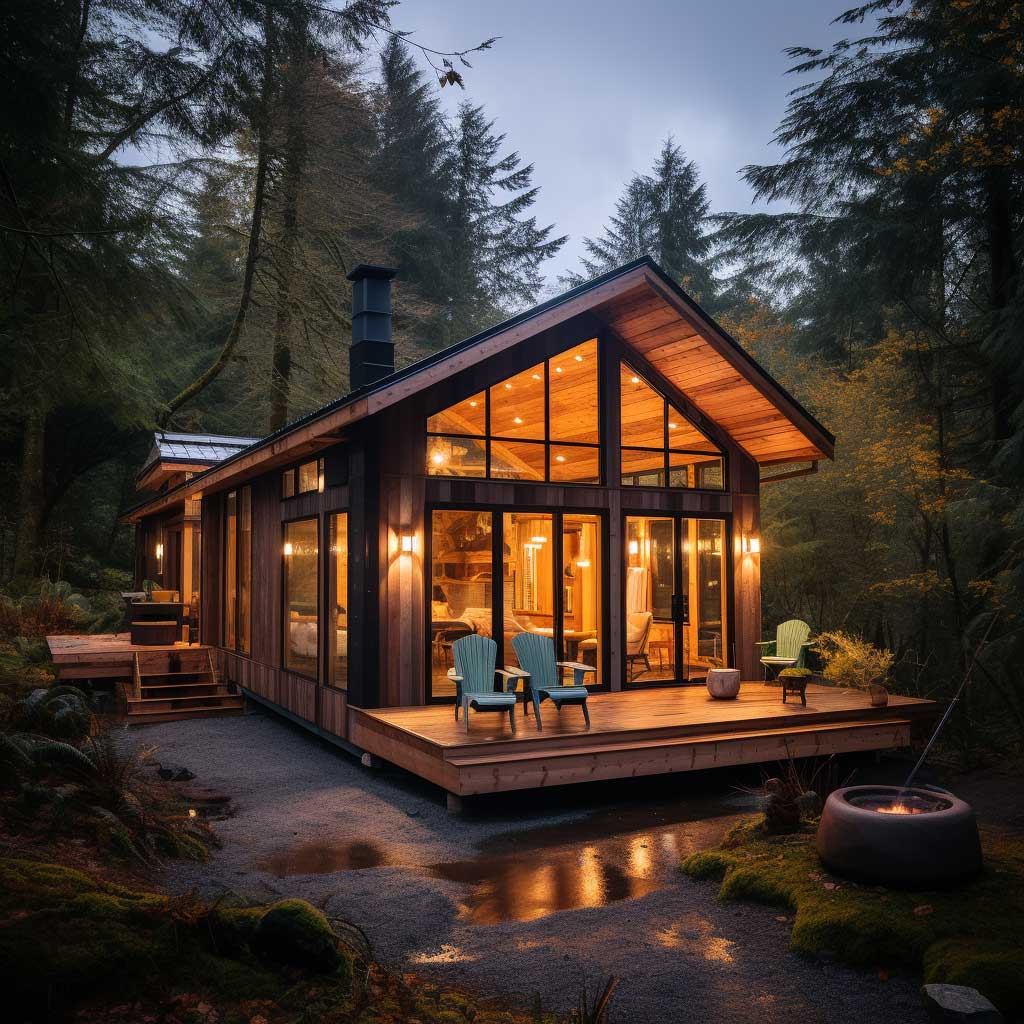


In the contemporary architectural landscape, sustainability is no longer just a buzzword; it’s a necessity. As we explore the realm of cabin exterior ideas, a prominent trend emerges – the rise of eco-friendly facades in modern cabin designs. These facades, while environmentally conscious, do not compromise on aesthetics, offering a perfect blend of form and function.
Cabins, by their very nature, are deeply connected to the environment. They are often nestled amidst forests, mountains, or lakesides, offering a retreat from urban chaos. Given this intrinsic connection to nature, it’s only fitting that modern cabin exterior ideas prioritize sustainability. Eco-friendly facades are a testament to this commitment, ensuring that the cabin not only blends with its surroundings but also minimizes its ecological footprint.
One of the primary ways in which these facades achieve sustainability is through the use of recycled or renewable materials. Bamboo, for instance, has emerged as a popular choice due to its rapid growth rate and durability. Similarly, reclaimed wood, sourced from old structures or fallen trees, adds a touch of rustic charm while being environmentally responsible.
Another significant aspect of eco-friendly facades is energy efficiency. Modern cabin designs often incorporate features like green roofs, which provide natural insulation, reducing the need for artificial heating or cooling. Similarly, the use of solar panels or wind turbines ensures that the cabin generates its own clean energy, further reducing its carbon footprint.
However, eco-friendly facades in modern cabin designs are not just about sustainability; they’re also about aesthetics. Architects and designers are continually experimenting with materials and techniques to create facades that are visually stunning. Textured surfaces, dynamic patterns, and innovative construction methods ensure that these cabins stand out, making a statement both ecologically and aesthetically.
In conclusion, eco-friendly facades in modern cabin designs represent the future of cabin exterior ideas. They prove that it’s possible to create structures that are both beautiful and responsible, ensuring that our retreats into nature do not harm the very environment we seek to connect with.
Sleek Lines and Expansive Windows in Cabin Architecture
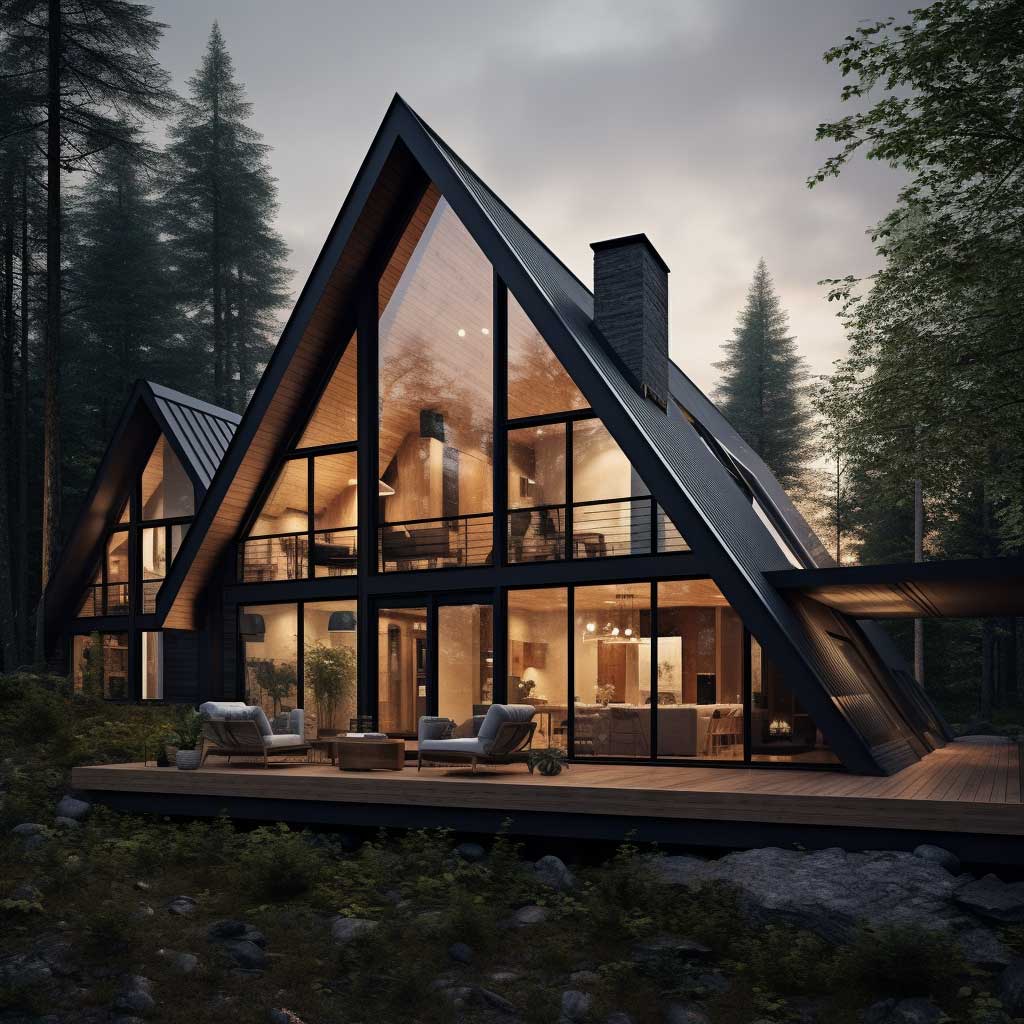

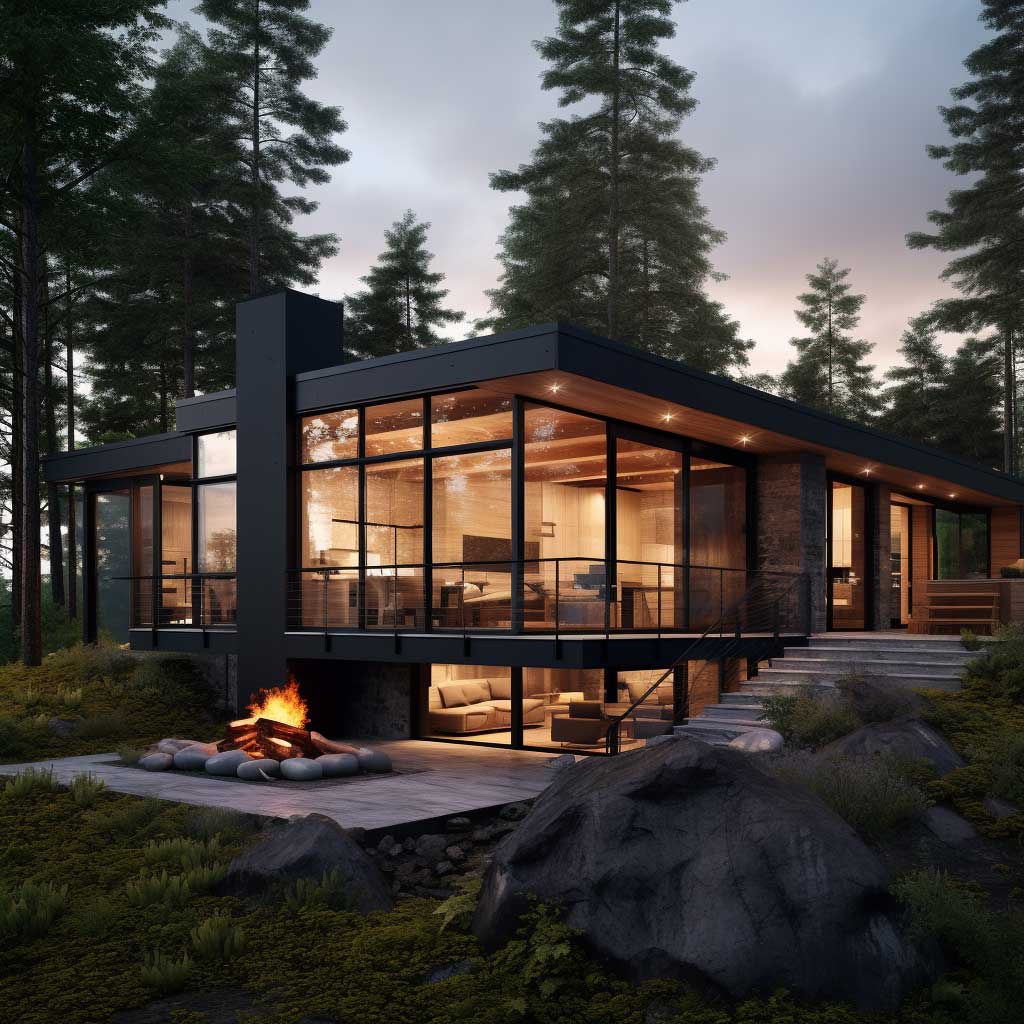
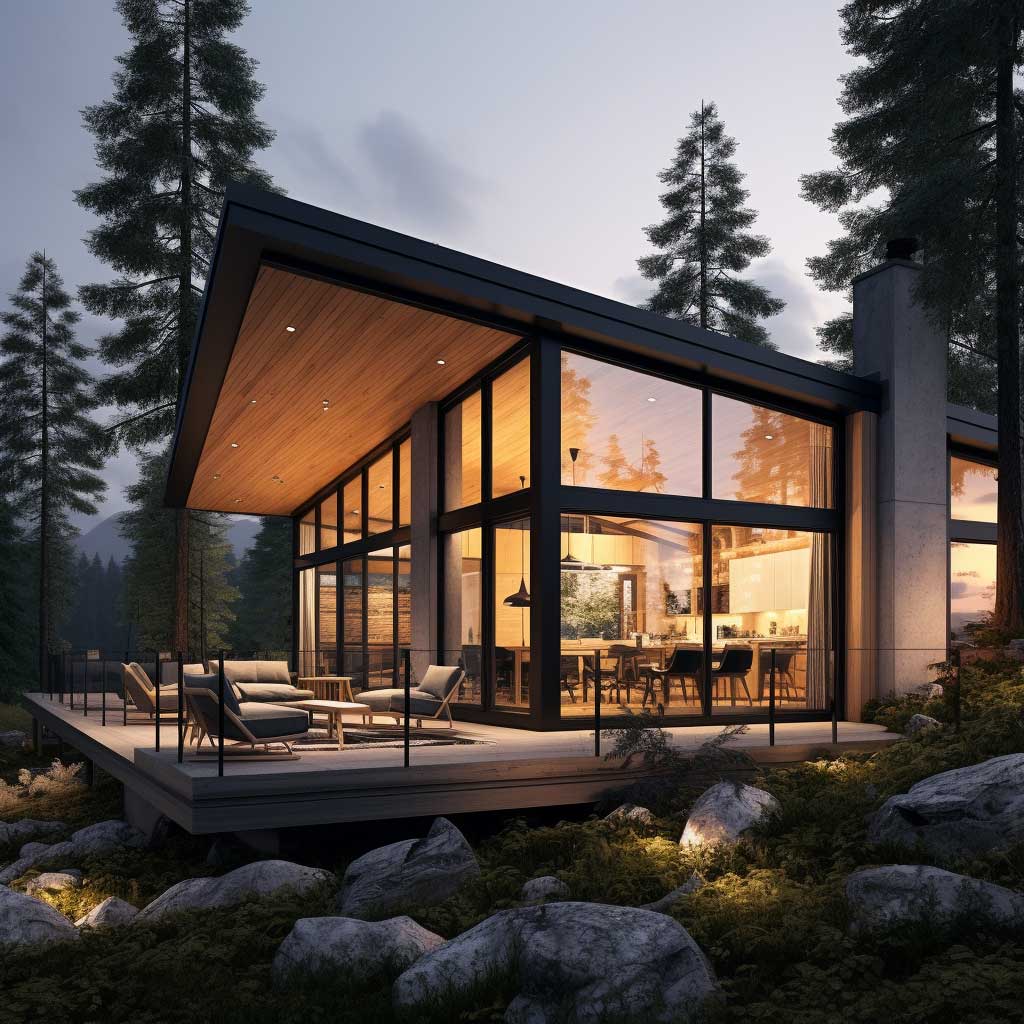
The world of cabin exterior ideas is vast and ever-evolving. As architectural trends shift and modern aesthetics become more prevalent, cabins are undergoing a transformation. One of the most striking trends in this space is the emphasis on sleek lines and expansive windows in cabin architecture.
Historically, cabins were simple, compact structures with small windows and a focus on functionality. However, as design sensibilities evolved, so did the concept of the cabin. Modern cabin exterior ideas prioritize open spaces, unobstructed views, and a seamless connection with nature. Sleek lines and expansive windows are central to this design philosophy.
Sleek lines, as the term suggests, are all about simplicity and elegance. They eliminate unnecessary frills, focusing on clean, straight edges that create a sense of order and symmetry. In cabin architecture, this translates to structures that are both contemporary and timeless. The absence of ornate designs ensures that the cabin blends seamlessly with its surroundings, allowing nature to take center stage.
Expansive windows, on the other hand, are all about maximizing natural light and views. They ensure that even when one is indoors, the beauty of the surrounding wilderness is always within sight. Large sliding doors, floor-to-ceiling windows, and even skylights are common features in modern cabin designs. They not only make the interiors feel bright and airy but also create a sense of continuity between the indoors and the outdoors.
However, while sleek lines and expansive windows offer numerous aesthetic benefits, they also pose challenges. Ensuring privacy, especially in cabins with large glass facades, can be tricky. Similarly, energy efficiency becomes crucial, given the large surface area of the windows. Modern cabin exterior ideas address these challenges through innovative solutions like tinted or insulated glass, strategic placement of windows, and the use of natural barriers like trees or shrubs.
In conclusion, sleek lines and expansive windows in cabin architecture represent a paradigm shift in cabin exterior ideas. They challenge the traditional, proving that with the right design approach, cabins can be both modern and cozy, offering a unique blend of luxury and simplicity.
Natural Materials Meet Modern Design Sensibilities
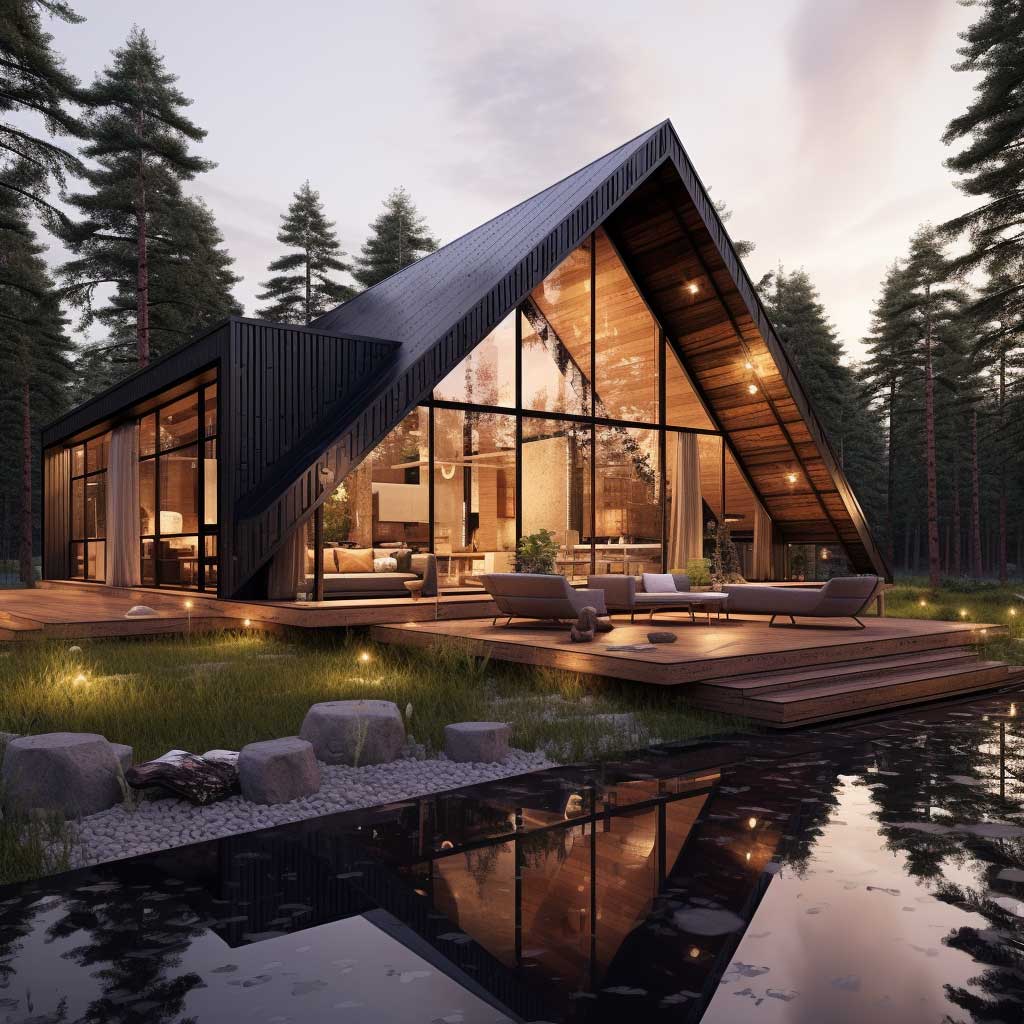
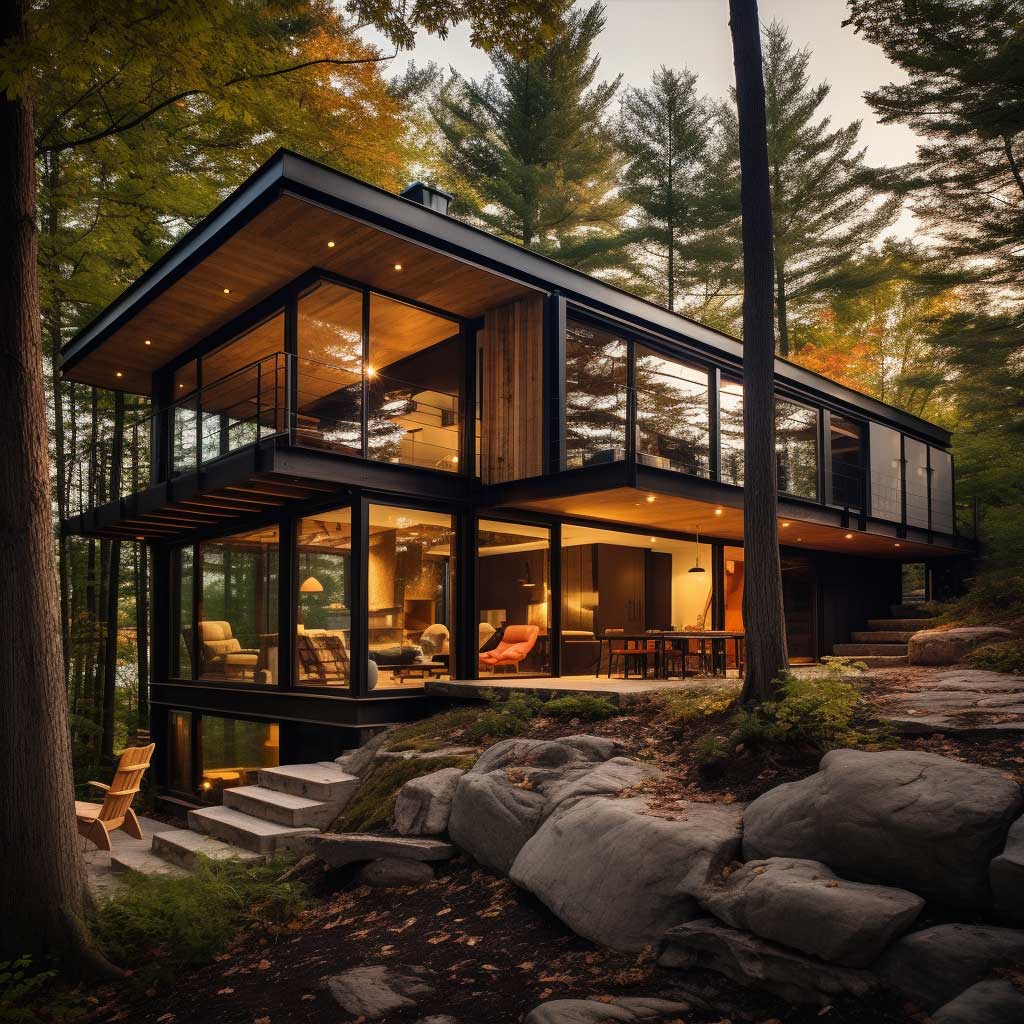


The fusion of old and new is a recurring theme in the world of design. As we delve into cabin exterior ideas, this fusion becomes evident in the way natural materials are being combined with modern design sensibilities. This trend is not just about aesthetics; it’s about creating spaces that resonate with the soul.
Natural materials, especially wood, have always been central to cabin design. They offer warmth, texture, and a connection to nature that’s hard to replicate with synthetic materials. However, in the past, the use of these materials was often limited to traditional designs. Modern cabin exterior ideas challenge this norm, proving that natural materials can be both rustic and contemporary.
One of the hallmarks of this design approach is the innovative use of wood. Instead of traditional logs or planks, modern cabins often feature wood in unique forms – be it charred wood facades, intricate wooden screens, or even wooden tiles. These designs, while rooted in tradition, have a contemporary edge, making them perfect for the modern adventurer.
Another significant aspect of this trend is the combination of wood with other natural materials like stone, clay, or even bamboo. This blend not only adds visual interest but also enhances the cabin’s sustainability. For instance, stone walls provide natural insulation, ensuring that the cabin remains cool in summers and warm in winters.
However, while natural materials offer numerous benefits, they also come with challenges. Ensuring durability, especially in harsh weather conditions, is crucial. Modern cabin exterior ideas address this challenge through techniques like wood treatment, the use of weather-resistant finishes, and even the incorporation of modern materials like metal or glass for added protection.
In conclusion, the meeting of natural materials and modern design sensibilities in cabin architecture is a testament to the versatility of cabin exterior ideas. It proves that with a bit of creativity and a respect for tradition, it’s possible to create spaces that are both contemporary and soulful.
The evolution of cabin exterior ideas reflects a broader shift in architectural and design sensibilities. As the world becomes increasingly urbanized, there’s a growing desire to reconnect with nature without compromising on modern comforts. These revolutionary cabin designs, with their blend of tradition and innovation, offer the perfect solution. They ensure that even in the heart of the wilderness, one doesn’t have to forgo contemporary aesthetics and functionality.












